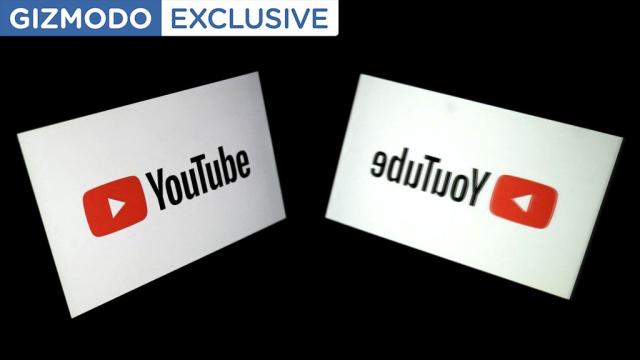YouTube was on the precipice of cutting all of its most profitable ads amid fallout from Elsagate, the most bizarre scandal in the history of the biggest video-sharing site on the internet. It’s a silly name, but it hearkens to a time when thousands of disturbing algorithm-driven videos starring popular children’s characters flooded the sections of the site normally intended for kids. Indicating just how serious the problem was, the move to cut ads would have immediately cost the company billions of dollars and changed internet advertising forever.
That’s according to the new book Like, Comment, Subscribe: Inside YouTube’s Chaotic Rise to World Domination, penned by Bloomberg reporter Mark Bergen and out today. Sridhar Ramaswamy, who ran technical operations for all of Google’s ads, including on YouTube, proposed the solution during a November 2017 meeting of YouTube’s most senior executives, including CEO Susan Wojcicki and chief product officer Neal Mohan, Bergen reports. Until YouTube could rectify the problem of extremely popular and extremely disturbing videos aimed at children, Ramaswamy wanted to yank all “brand ads,” the video ads that play before and after YouTube videos that are similar to traditional TV commercials. These types of ads bring in far more money for YouTube than their counterpart, “direct response” ads like coupons and offers. Adidas and Mars were among the massive corporations that suspended their ad buys in response to the disturbing, fetishistic kids’ content, spurring the company to consider this kind of drastic action.
“YouTube had created the world’s biggest kids’ entertainment service and hadn’t grappled with what content was there,” Bergen told Gizmodo. YouTube declined to comment.
To fix the Elsagate problem, YouTube would instead opt for another sweeping action: deleting hundreds of thousands of videos and 150 channels outright. Another two million channels were demonetised, all their ads removed. Taken together, the videos and channels had amassed tens of billions of views before they were erased.

YouTube’s Sophie’s choice — either axe advertising cash cows or huge swaths of its most popular videos and creators — illustrates the severity of the Elsagate dustup. Without decisive action, the imbroglio posed an existential problem for the Google subsidiary’s business and reputation.
“YouTube was considering pulling the plug on its biggest commercial product,” Bergen said, noting that the company reported $US8 ($11) billion in revenue that year. “It was the first time it ever considered doing that.”
The controversy derived its name from the eerie mashups of characters that would appear in videos in grotesque scenarios. The blog The Awl collected several in screenshots: “Frozen Elsa FLUSHES Spiderman in Toilet!,” “Frozen Elsa Gets BRAIN BELLY w Spiderman Joker Maleficent,” or “Snow White Gets Pooped on Her Face by Joker!” Creators, notably the channels Toy Freaks and Webs & Tiaras, followed a firehose of views from children eager for more content featuring their favourite characters down a rabbit hole into strange, dark inversions of plots appropriate for children. Other, similar videos would depict children in scenarios that verged on dangerous, such as being fixed to a wall with colourful duct tape, vomiting after eating too much, or appearing to have their faces shaved by their parents as punishment. Both adults and children would chew on pacifiers while wearing Speedos. Commenters on the videos would use coded language to indicate pedophilic interest in the children onscreen.
Young audiences are also frequently unaware of how to turn off autoplay, which allowed the beast to feed itself, in a way. Many videos seemed like they could have been produced by robots.
In one of the first stories on the topic, “Something Is Wrong on the Internet,” author James Bridle described the videos as the logical endpoint of the recommendation systems YouTube itself had designed. “This is content production in the age of algorithmic discovery — even if you’re a human, you have to end up impersonating the machine,” he wrote.
One shocking statistic from Like, Comment, Subscribe demonstrates the magnitude of the problem YouTube was grappling with. An internal report drawn up for Disney before YouTube’s decision estimated that the entertainment giant’s promotional clips uploaded in a month drew in a billion views per month. Unauthorised amateur videos featuring Elsa were raking in 13 billion views per month.
Elsagate sent shockwaves through YouTube and radically changed how it approached content for children. Videos meant for children are now specifically tagged as such and can’t run targeted ads.
“The kids’ issue hit home with a lot of people who worked there, and the company was about to face their most significant regulation,” Bergen said. The FTC fined YouTube and Google $US170 ($236) million for violating children’s privacy laws in September 2019. “People working there were asking, ‘Is this what our ads business is based on, sharing revenue with these types of videos? It was visceral. People in the company were parents and also very much aware that they could run afoul of COPPA, which they did.”
Ramaswamy, once one of the most powerful people in the entire advertising industry, left the advertising business for good after the Elsagate affair, according to Like, Comment, Subscribe.
